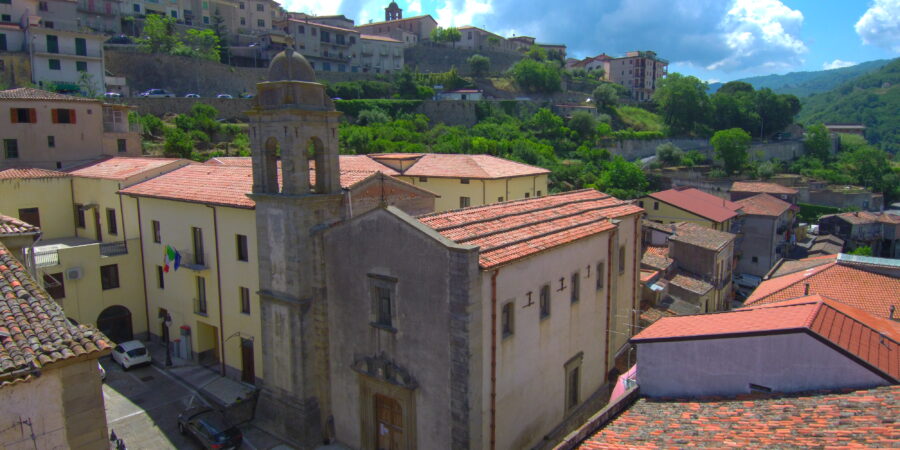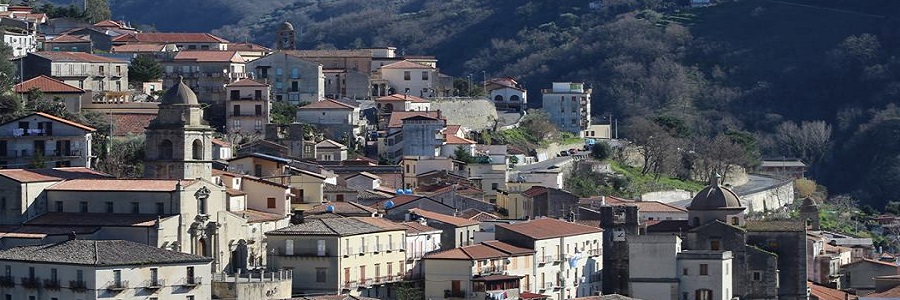Chiesa di San Domenico

🇮🇹 La chiesa di San Domenico fu costruita nella prima metà del 1500. Nel 1563 fu concessa dall’abate basiliano Bologna ai predicatori domenicani che vi costruirono accanto un convento destinato allo studio dei novizi.
La chiesa, originariamente dedicata a S. Antonio, presenta un’unica navata. Sul portale si trova una statuina in marmo bianco di S. Domenico, custodita in una nicchia, che riporta la data 1701; sulla torre campanaria, invece, è riportata la data 1741.
L’arco trionfale è adornato dallo stemma della famiglia Angotta,
La volta dell’abside è ricamata con meravigliosi stucchi realizzati dal palermitano Aloisio Piscott, della scuola Serpotta, nel 1779.
Sulla destra si può ammirare un quadro del tortoretano Tommasi, che raffigura S. Rosa da Viterbo, databile intorno al 1671. Sulla parete vicina si trova un affresco della Madonna della Lettera con l’iscrizione A tutti i messinesi salute e benedizione da Dio Padre onnipotente.
A sinistra vi è una cappella contenente un Crocifisso del 1600, una lapide murale in ricordo di donna Sinforosa Amato e Fimia, morta nel 1643, moglie di don Bernardo Amato, allora governatore di Sant’ Angelo.
Dopo i lavori di restauro, sull’altare maggiore è stata collocata una statua in bronzo raffigurante S. Domenico, realizzata dallo scultore palermitano Armando Tomaselli.
All’interno della chiesa, in due sarcofagi di marmo intarsiato, collocati ai lati dell’abside, sono custodite le spoglie dei coniugi Giovanni Angotta e Maria Amato, morti rispettivamente nel 1642 e nel 1627. La lapide del primo fu eretta nel 1643 ad opera del nipote ed unico erede, don Filippo Amato Angotta. Una parte di quello che era l’originario convento domenicano è oggi adibito a Palazzo Municipale.
FONTI:
Nicola Fazio – Terra di S.Angelo (ed. Pungitopo)
Achille Caldarera – S.Angelo (Cenno Storico)
Daniele Tranchida – Sotto il Mantello dell’Abbazia
Basilio Segreto – Archivio Storico Santangiolese
🇬🇧 The church of St. Domenico was rebuilt in the first half of 1500’s. In 1563, it was given by the Basilian abbot Bologna to the Dominican preachers who built a convent next to it, appositely destined to the novices as a place to study.
The church, originally dedicated to St. Antonio, has one single nave. On the portal is a small white marble statue of St. Domenico, guarded in a niche that bears the date of 1701; the bell tower shows instead the date of 1741.
The triumphal arch is decorated with the coat of arms of the family Angotta.
The apse’s vault is ornamented with beautiful stuccoes realized in 1779 by Aloisio Piscott of the Serpotta’s School, who was from Palermo.
On the right, you can admire a painting of Tommasi from Tortoreto, depicting St. Rosa from Viterbo, dating from around 1671. On the adjoining wall there is a fresco of the Virgin of the Letter with the inscription: A tutti i messinesi salute e benedizione da Dio Padre onnipotente (May all the people who live in Messina receive health and blessing from God the Father Almighty).
On the left, there is a chapel including a crucifixof 1600, a wall tombstone realized in memory of lady Sinforosa Amato and Fimia, (who died in 1643) wife of Sir Bernardo Amato who, at that time, was the governor of Sant’Angelo.
Following restoration work, a bronze statue of St. Domenico, realized by the sculptor Armando Tomaselli from Palermo, was placed on the main altar.
Inside the church, two inlaid marble sarcophagi, located on the sides of the apse, contain the remains of the spouses Giovanni Angotta and Maria Amato, who died in 1642 and 1627 respectively. The gravestone of Sir Angotta specifically was erected in 1643 by his nephew and sole heir, Sir Filippo Amato Angotta.
Part of the original Dominican convent is today used as the town hall.
Traduzione a cura di Maria Diletta Fazio, Francesca Cortolillo e Alessia Bertolone


